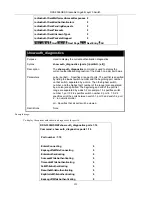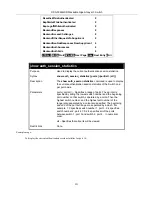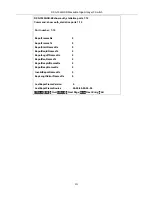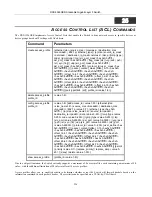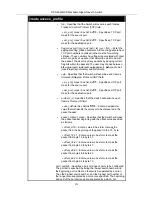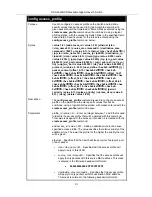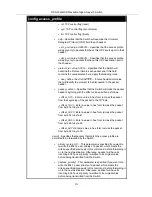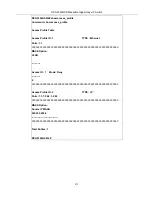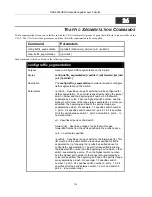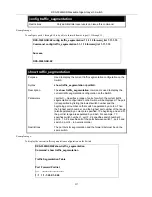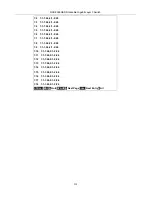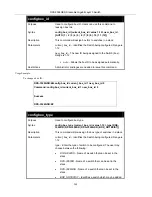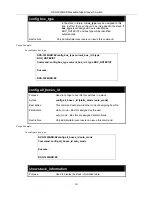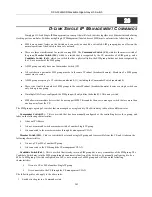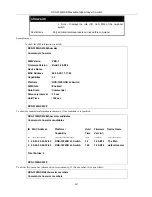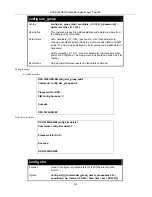
DXS-3326GSR Stackable Gigabit Layer 3 Switch
26
T
RAFFIC
S
EGMENTATION
C
OMMANDS
Traffic segmentation allows you to further sub-divide VLANs into smaller groups of ports that will help to reduce traffic on the
VLAN. The VLAN rules take precedence, and then the traffic segmentation rules are applied.
Command Parameters
config traffic_segmentation
[<portlist>| all] forward_list [null | all | <portlist>]
show traffic_segmentation
{<portlist>}
Each command is listed, in detail, in the following sections.
config traffic_segmentation
Purpose
Used to configure traffic segmentation on the Switch.
config traffic_segmentation [<portlist> | all] forward_list [null
| all | <portlist>]
Description
The
config traffic_segmentation
command is used to configure
traffic segmentation on the Switch.
Parameters
<portlist>
−
Specifies a range of ports that will be configured for
traffic segmentation. The port list is specified by listing the lowest
switch number and the beginning port number on that switch,
separated by a colon. Then the highest switch number, and the
highest port number of the range (also separated by a colon) are
specified. The beginning and end of the port list range are
separated by a dash. For example, 1:3 specifies switch number
1, port 3. 2:4 specifies switch number 2, port 4. 1:3-2:4 specifies
all of the ports between switch 1, port 3 and switch 2, port 4
−
in
numerical order.
all
– Specifies all ports on the Switch.
forward_list
−
Specifies a range of ports that will receive
forwarded frames from the ports specified in the portlist, above.
null
−
no ports are specified
<portlist>
−
Specifies a range of ports for the forwarding list. This
list must be on the same switch previously specified for traffic
segmentation (i.e. following the
<portlist>
specified above for
config traffic_segmentation). The port list is specified by listing
the lowest switch number and the beginning port number on that
switch, separated by a colon. Then the highest switch number,
and the highest port number of the range (also separated by a
colon) are specified. The beginning and end of the port list range
are separated by a dash. For example, 1:3 specifies switch
number 1, port 3. 2:4 specifies switch number 2, port 4. 1:3-2:4
specifies all of the ports between switch 1, port 3 and switch 2,
port 4
−
in numerical order.
Syntax
236

